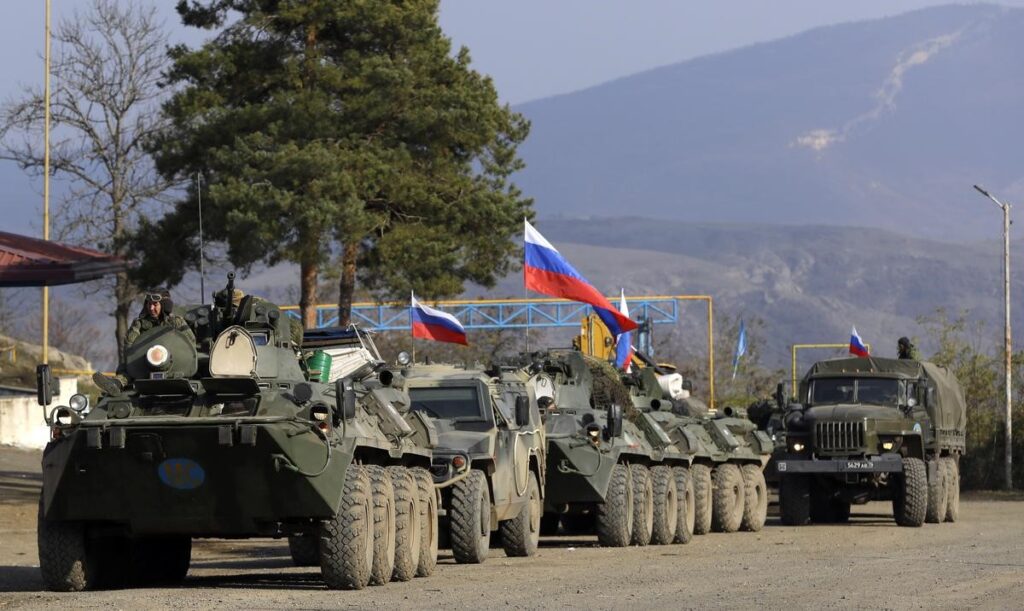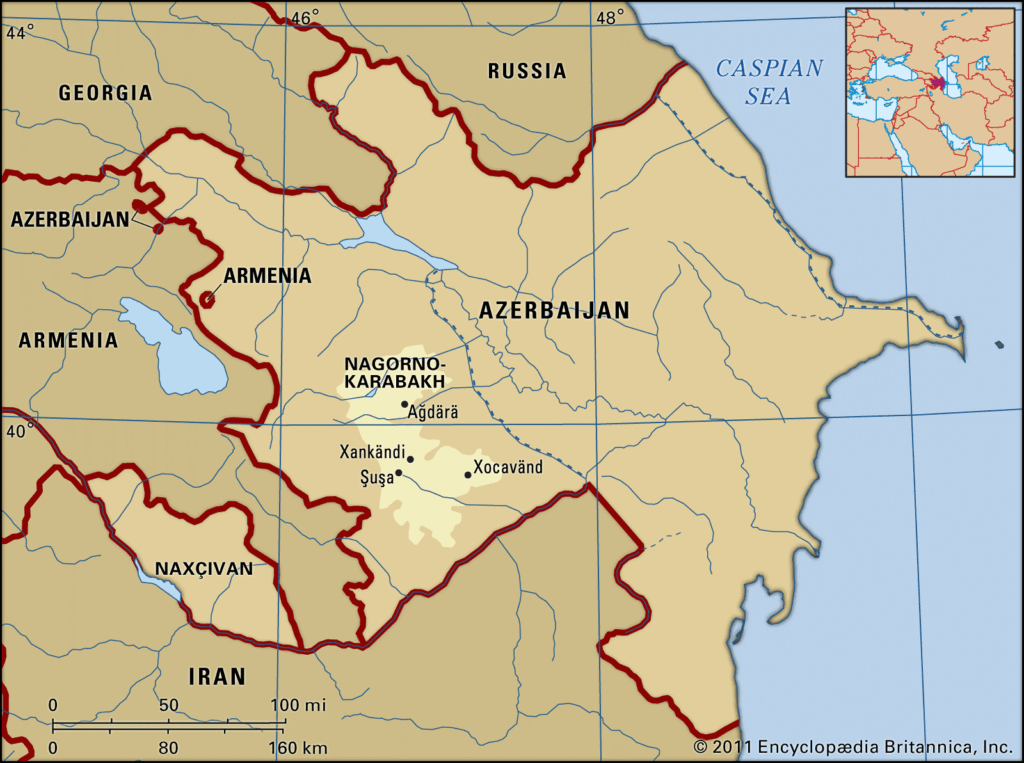Nagorno-Karabakh Region has seen the withdrawal of Russian peacekeepers following Azerbaijan’s recapture of disputed territory from Armenian separatists.
About Nagorno-Karabakh Region:
- It is situated in the South Caucasus, straddling eastern Europe and western Asia.
- Features mountainous terrain and lush forests.
- Recognized internationally as part of Azerbaijan, including the cities of Stepanakert (capital) and Shusha.
Cultural and Historical Context:
- Known as Artsakh by Armenians, it has a predominantly ethnic Armenian population, with a smaller Azeri minority.
- Both Azerbaijan and Armenia have claimed it since the collapse of the Russian Empire in 1917.
Time Line of the Conflict:
| Year | Event Description |
| 1921 | Nagorno-Karabakh became part of Azerbaijan SSR after the fall of Czarist Russia. |
| 1923 | Establishment of Nagorno-Karabakh Autonomous Oblast within Azerbaijan SSR, predominantly Armenian. |
| 1988 | Nagorno-Karabakh legislature declared its intention to join Armenia, sparking tensions. |
| 1991 | Nagorno-Karabakh declared independence as the Soviet Union dissolved. |
| 1991-1994 | War erupted between Armenia and Azerbaijan, resulting in about 30,000 deaths; Armenian forces occupied parts of Azerbaijan. |
| 1994 | Bishkek Protocol brokered by Russia ended the war, leaving Nagorno-Karabakh de facto independent but dependent on Armenia. |
| 2020 | Renewed war with Azerbaijan regaining control around Nagorno-Karabakh amid geopolitical distractions. |
| Dec-22 | Azerbaijan blockaded the Lachin Corridor, causing severe shortages in Nagorno-Karabakh. |
| 2023 | Azerbaijan launched an offensive, reclaiming control over Nagorno-Karabakh. |
Ref:Source
| UPSC IAS Preparation Resources | |
| Current Affairs Analysis | Topperspedia |
| GS Shots | Simply Explained |
| Daily Flash Cards | Daily Quiz |




